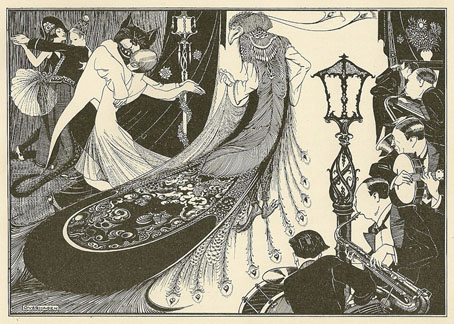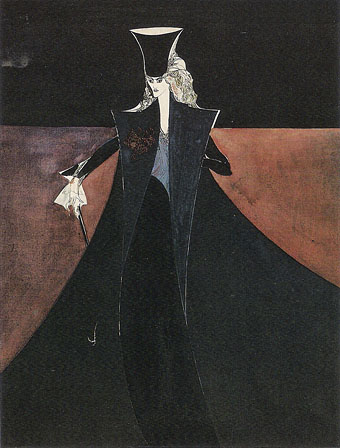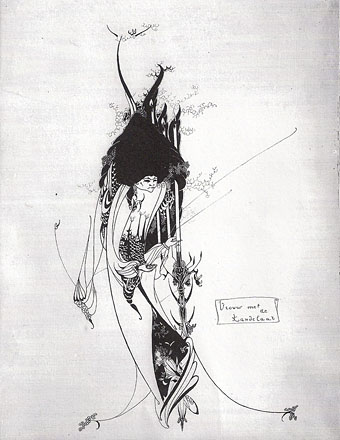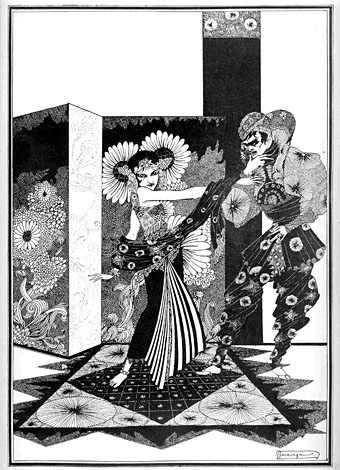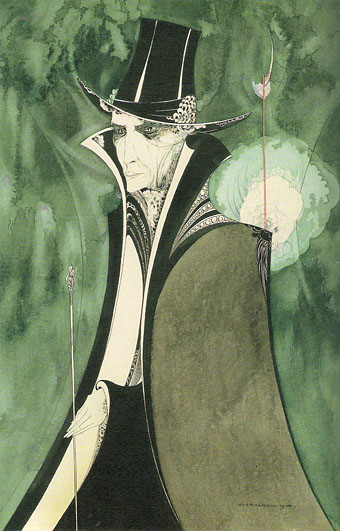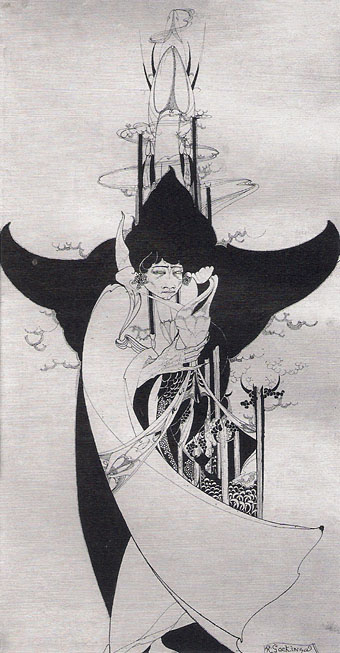Illustration by Otto Verhagen from Yolanda – Het Boek van Bloei (1931) by Nan Copijn.
Would-be Decadents is perhaps a better label, the Decadent ship having set sail across an absinthe-tinted sea by the time these artists were putting pen to paper. Their drawings are another set of scarce images forwarded by Sander Bink who maintains the Rond1900 site. (See this earlier post for further examples.) Sandor also sent artwork details which I’ve quoted below. In addition to yet more overt Beardsley influence (the Verhagen above and René Gockinga’s woman with a candle) there’s also a striking Harry Clarke influence in the second Gockinga drawing which is closer to Clarke’s idiosyncratic style than (for example) these later drawings by Cardwell Higgins. Seeing one artist borrow the mannerisms of another is a common thing; far less common is finding an artist who adopts different styles the way Gockinga does. Incidentally, the Couperin novel mentioned below was published with a typically elegant cover design by Symbolist artist Jan Toorop.
(Thanks again Sander!)
Otto Verhagen. Illustration (not used as such) for Couperus’ Psyche (1898). Engraving, ca 1913. Collection Sander Bink. This is a personage from the story but to me it looks somewhat like an Oscar Wilde portrait!
Illustration for the very popular fairy tale for adults Psyche by Louis Couperus (1863–1923). You might have heard of Couperus: Oscar Wilde appreciated his decadent, somewhat homosexual, novel Noodlot (1890), translated as Footsteps of fate. Some letters were exchanged. Couperus’ wife Elisabeth translated Dorian Gray in 1893. (First Dutch translation.)
Sortie (1904) by Carel de Nerée tot Babberich. Museum of Modern Art, Arnhem (from De Neree catalogue, 1986). Verhagen’s Dorian Gray seems to be influenced by this.
Woman with candle by René Gockinga, ca 1916. Current location unknown.
Indonesian lady dancing [as I call it—SB] by René Gockinga. From the Indonesian satirical-political periodical De Zweep [The Whip] 1922.
Previously on { feuilleton }
• Further echoes of Aubrey
• A Wilde Night
• Echoes of Aubrey
• After Beardsley by Chris James
• Illustrating Poe #1: Aubrey Beardsley
• The art of Karel de Nerée tot Babberich, 1880–1909
• Beardsley’s Rape of the Lock
• The Savoy magazine
• Beardsley at the V&A
• Merely fanciful or grotesque
• Aubrey Beardsley’s musical afterlife
• Aubrey by John Selwyn Gilbert
• “Weirdsley Daubery”: Beardsley and Punch
• Alla Nazimova’s Salomé

